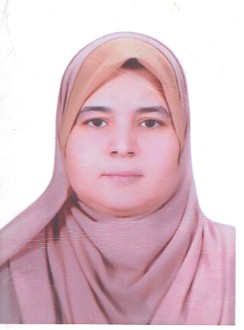Cryptosporidiosis is a disease caused by a coccidian parasite that
causes diarrhea in wide range of vertebrates worldwide . The concept of
cryptosporidiosis has been changed from that of the rare and
asymptomatic infection to an important cause of severe longstanding
diarrhea in man specially in immunocompromised hosts. The diseaes is
of particular importance in early childhood. Due to the recent
increasingly higher incidence of infection by Cryptosporidium sp., it is
important for the physicians and clinical laboratories to be aware of the
appropriate diagnostic techniques for identification the organism in
routine stool examination . The present work , therefore , aimed at
evaluation of some oocysts staining techniques in stool as well as to find
out the role of the level of a Cryptosporidium specific coproantigen in
the diagnosis of the infectios .
During the present study, diarrheic stool sample ,were collected
from fifty immunocompromised children ranging in age from few months
to ten years (34 males, and 16 females) attending Sohag University
Teaching Hospital from the period of May to August ,1995.Out of these
children 22 were aged few months up to one year, 15 aged from one to
two years , 5 aged from two to four and 8 aged from four up to ten
years.
Out of the examined children ,34 were suffering from malnutrition
, 9 from nephrotic syndrome and 7 were recieving cytotoxic drugs .
Regarding the type of feeding 21 children were depending on bottle
feeding, 12 were breast feeding and 17 were weaned, morever ten
apparantly healthy children of the same age group (3 males & 7 females)
were used as normal control.
Stool samples were tested for Cryptosporidium oocysts by
staining with modified Zeihl-Neelsen acid fast technique safranine,
Methylene blue and negative staining...On the other hand the samples
were tested for Cryptosporidium specific cproantigen by ELISA
assessment.
Oocysts of Cryptosporidium were identified in 22% of cases and
2 and of the ten controls by using modified Zeihl-Neelsen staining .
Safranin Methylene blue staining identified only 12% of cases while all
Controls were negative . Negative staining illustrated oocysts in only 4% of
Cases and all controls ,were negative .
Using ELISA assessment forspecific Cryptosporidium antigen in
faecal samples illustrated different levels of infection in 38% of cases
and in three controls .
Form the previously mentioned data it was assumed that:
The best staining technique was the modified Zeihl-Neelsen
technique which was shown to be superior to safranin methylene blue
and negative staining . the latter was shown to be the poorest method for
identification of oocysts in stools and it was suggested to be better used
in identification of bigger faecal cysts as these of Entamoeba histolytica
and Giardia lamblia . However the following disadvantages were
experienced in the different staining techniques:
- (
-
Presence of strach granules which retained pale red colour
with Zeihl-Neelsen acid fast stain .Unless careful decolourization
is used, their presence may lead to false positive diagno sis .
-
As previous authors indecated, some Cryptosporidium strains
are not acid fast, thus false negative results might be obtained .
-
Fluctuation in the number of daily output of oocysts or
intermittent oocysts shedding might also represent a major
difficulty in accurate identification of oocysts by staining
Using ELISA assessment of Cryptosporidium specific
cproantigen yeilded the best results as 38% of cases were found positive
for infection , (While the best staining technique has shown only 22%
positive cases)’. Moeover , using the visual and specrophotometric
methods for reading the ELISA , it was possible to divide the positive
cases quantitavely into mild (O.D. 0.05-1.00} mederate (O.D. 1.00-3.00)
and severe cases (O.D. more than 3.00) and thus it was possible to study
the level of infection in different age groups .
Under different feeding habits and different causes of
immunodeficiency . Thus most of the infected cases were in the age one-
two years . Regarding the cases of immunodeficeincy, the present data indicated that more thaji half of the nephrotic syndrome cases suffered
from cryptosporidiosis , while malnutrition ranked second (38.2%) and
lastly the use of cytotoxic drugs in (14.3%) of infected cases , ?
j.
Feeding habites jwere shown in the present study to be an
important predisposing factor in Cryptosporidium infection . Thus in
children depending totally on breast feeding , only one case was found
mildly positive . Higher rates of infection were detected among weaned
children (41.2%) and bottle feeding (52.3%) . The last two categories
are at risk due to pollution and contamination of their food with
infective oocysts .

